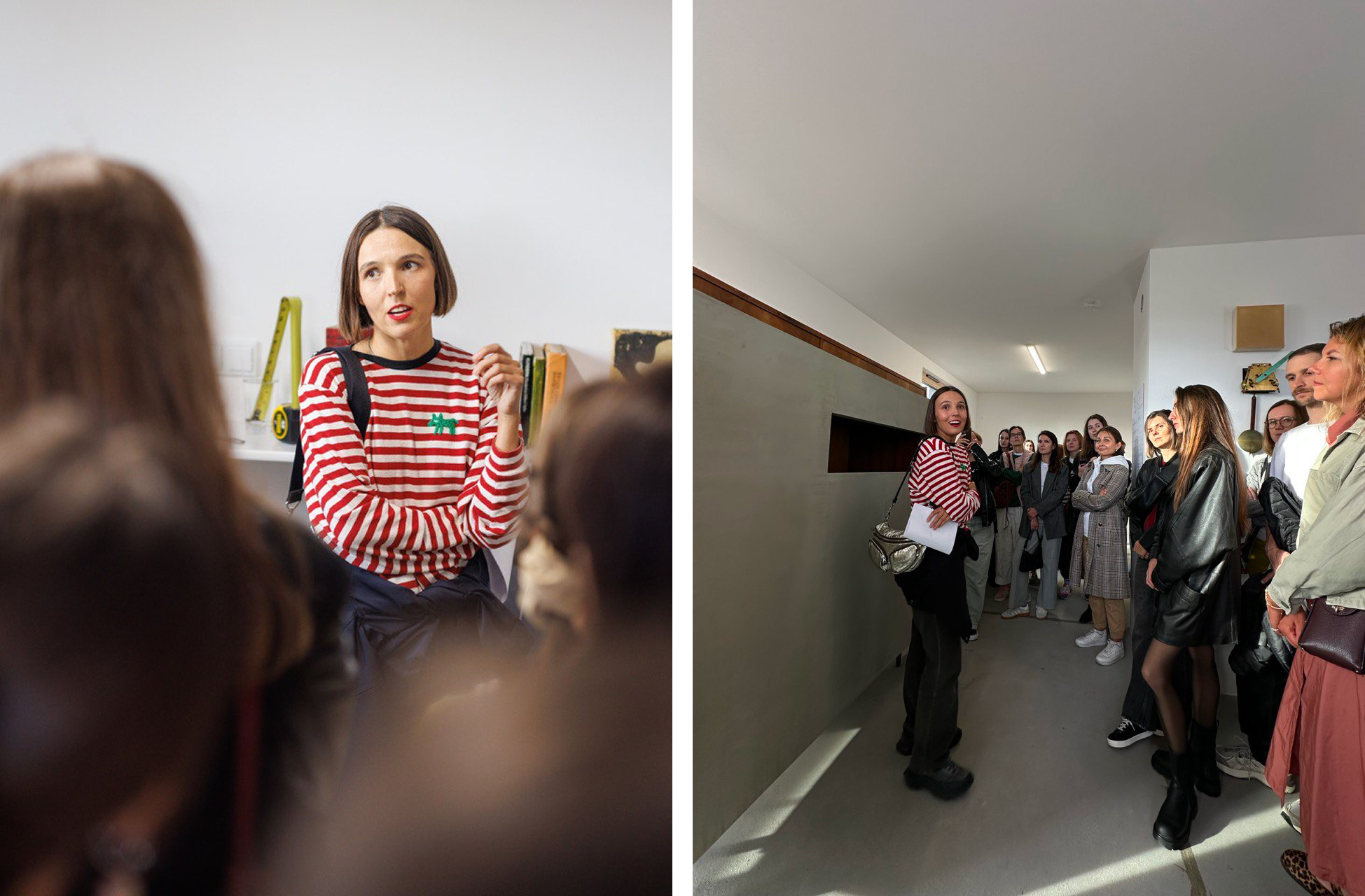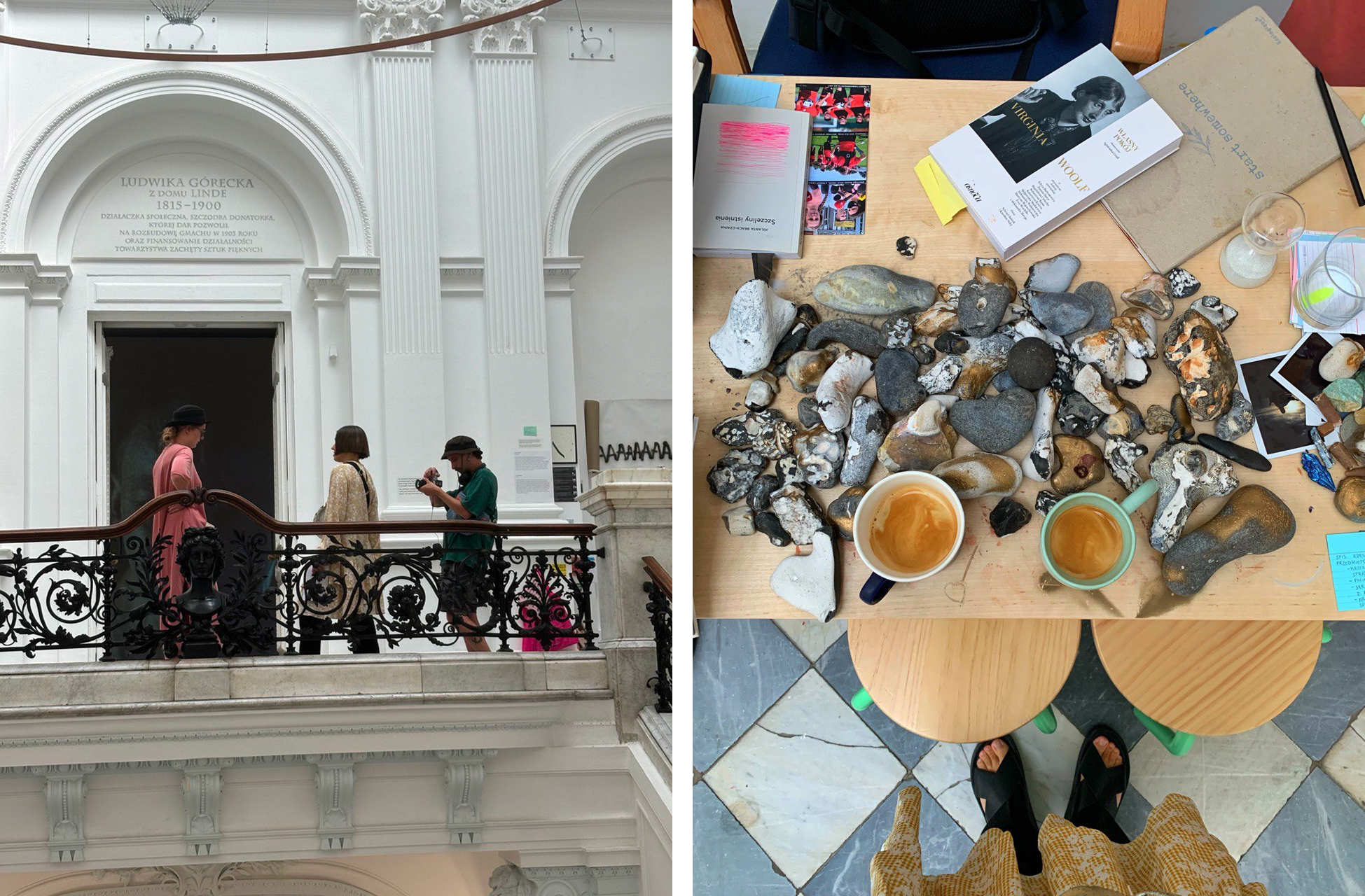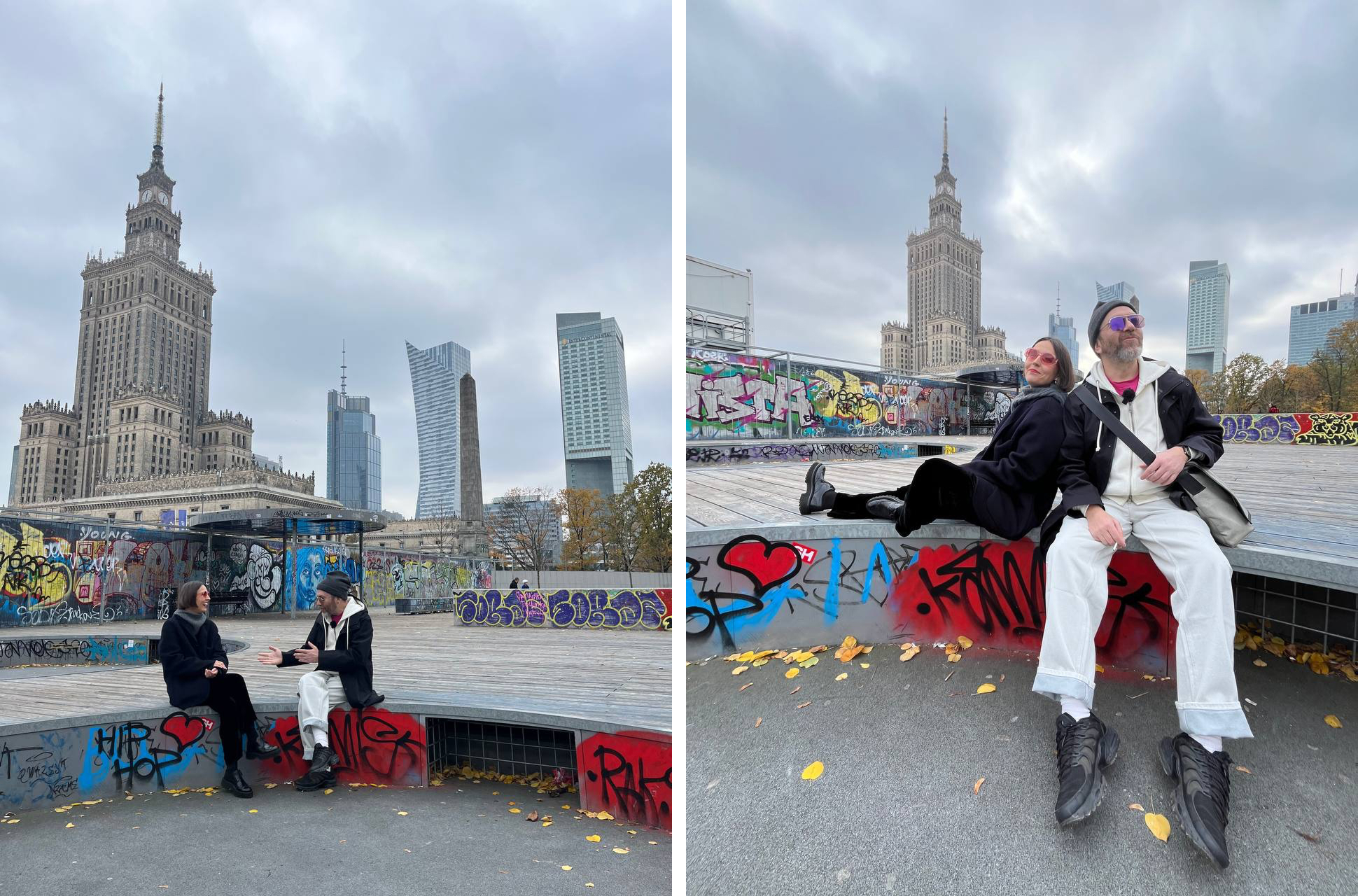“Conversations of a Little Hedonist” by Volha Mzhelskaya is not just a video project — it is a personal archive of an era, a gesture of solidarity, and an artistic statement about the reality of Belarusian culture beyond the country’s borders. In its third season, supported by a mini-grant from ArtPower Belarus, the project evolved further — now with English subtitles, new dynamics, and deep conversations with artists.
Volha Mzhelskaya is a curator and cultural manager who has been living in Warsaw for four years. Her project originated in Belarus as a Telegram channel and Instagram blog, where she wrote about Belarusian artists, exhibitions, and art. After relocating, the original format became impossible, but the idea persisted — it transformed into a video project about contemporary Belarusian art and life in exile.

Season Three — A Visual Archive of the Present
In the summer and autumn of 2024, the third season of Conversations of a Little Hedonist was recorded. It includes a series of video reports and two in-depth interviews — with artist and activist Yana Shostak and artist Aliaksei Luneu. The interviews were divided into parts to preserve the essential ideas that emerged during the conversations.
“Yana is public, always in the spotlight. And Aliaksei is a quiet observer who experiences deep inner processes. I wanted to show both types of creators — they are equally important.”
However, the defining feature of this season was the unexpected number of exhibitions featuring Belarusian artists — during the Warsaw Gallery Weekend alone, there were three such events. As a result, the project shifted its focus from interviews to documenting the art scene through video reports. Volha attended the openings, captured the spaces, works, and atmosphere, and added important curatorial context.

What ArtPower Belarus Support Made Possible
Financial support made it possible to purchase some equipment and involve a professional team: a videographer, an editor, and a translator. For the first time, all videos were supplemented with English subtitles — making them accessible to an international audience. The videos have also started to be used by the artists themselves as presentation materials for foreign partners.
“I was surprised when, even during the earlier seasons, Polish curators started asking about translations of my videos. I thought the project was only for Belarusians. But it turned out that it’s also needed by professionals from other countries.”

Challenges and Lessons Learned
There were plenty of challenges. The biggest one was time. As a mother of a young child, Volha had to plan her days down to the minute to get everything done. Editing, scripting, and filming required attention and precision.
“Instagram videos aren’t just reels.’ I try to maintain quality, depth, and meaning. Some of the videos are 12 to 15 minutes long, and people still watch them. That means it matters. One of my colleagues, a Polish curator, once said that my reports should be on Belsat or TVP. But for me, it’s important to preserve my own authorial approach — without fitting into an editorial framework.”
Another challenge was reporting. Although Volha had prior experience managing projects, she admits that the documentation required for the mini-grant turned out to be quite demanding and time-consuming.
“As a project manager, I was able to handle it — but for creators without experience, it could be difficult.”
Why It Matters
For Volha, “Conversations of a Little Hedonist” is more than just a project. It is a documentation of Belarusian art in exile, an effort to preserve cultural connection, and a way to inspire others. Her videos are watched in Belarus, Poland, Germany — wherever Belarusians may be. It’s a form of presence, a statement that culture is alive.
“It always breaks my heart — in a good way — when people from inside Belarus write to me. One of the reasons I do this project is so that those who are still there can also see what we’re doing outside the country, and that in some small way, we can rebuild bridges of communication.”
What’s Next
In 2025, thanks to a Warsaw art fellowship, Volha is launching a special project about Polish art for the Belarusian diaspora.
“I know that Belarusians living here are people with a high level of intellect. Art and culture matter to them. And they want to understand the space they now find themselves in.”
Is it worth applying for grants?
Some artists still view grants with skepticism — believing they are too bureaucratic, complicated, or unclear. In the Belarusian context, there are lingering stereotypes that grant support is suspicious or disconnected from “real art.”
But Volha, with her considerable experience, is convinced otherwise:
“I think if someone reacts negatively, the first thing to ask is — why? Often people can’t actually explain it. For example, I’ve heard that educational projects only make sense if they’re paid. But many are free because of grants — so that people who can’t afford it can still learn from professionals. That’s not a bad thing — it’s just another form of support.”
This project was made possible with the support of the ArtPower Belarus program, implemented by the Belarusian Council for Culture and the Danish Cultural Institute with funding from the European Union.
Stay tuned — the next edition of the ArtPower Belarus program will be announced soon.

